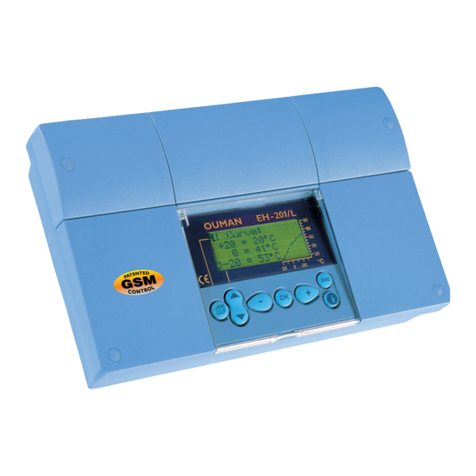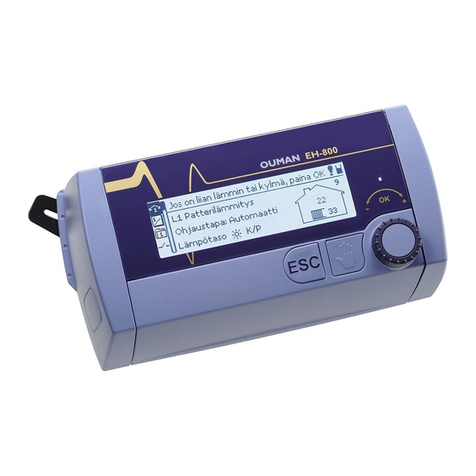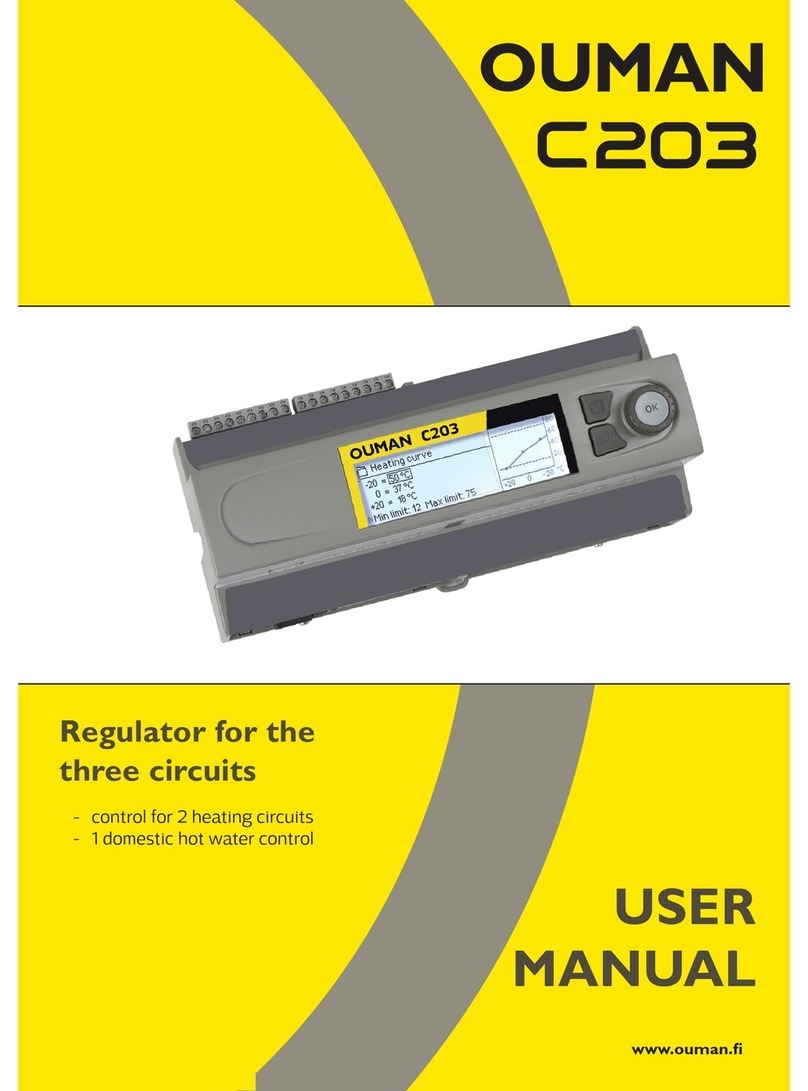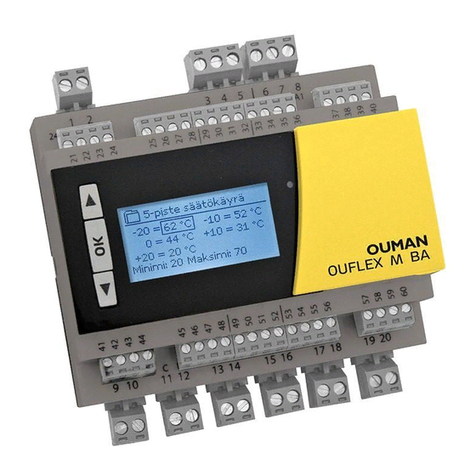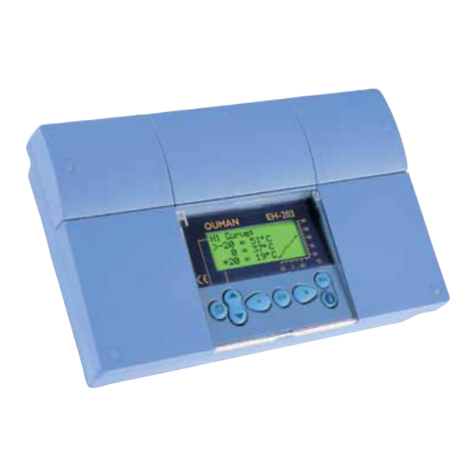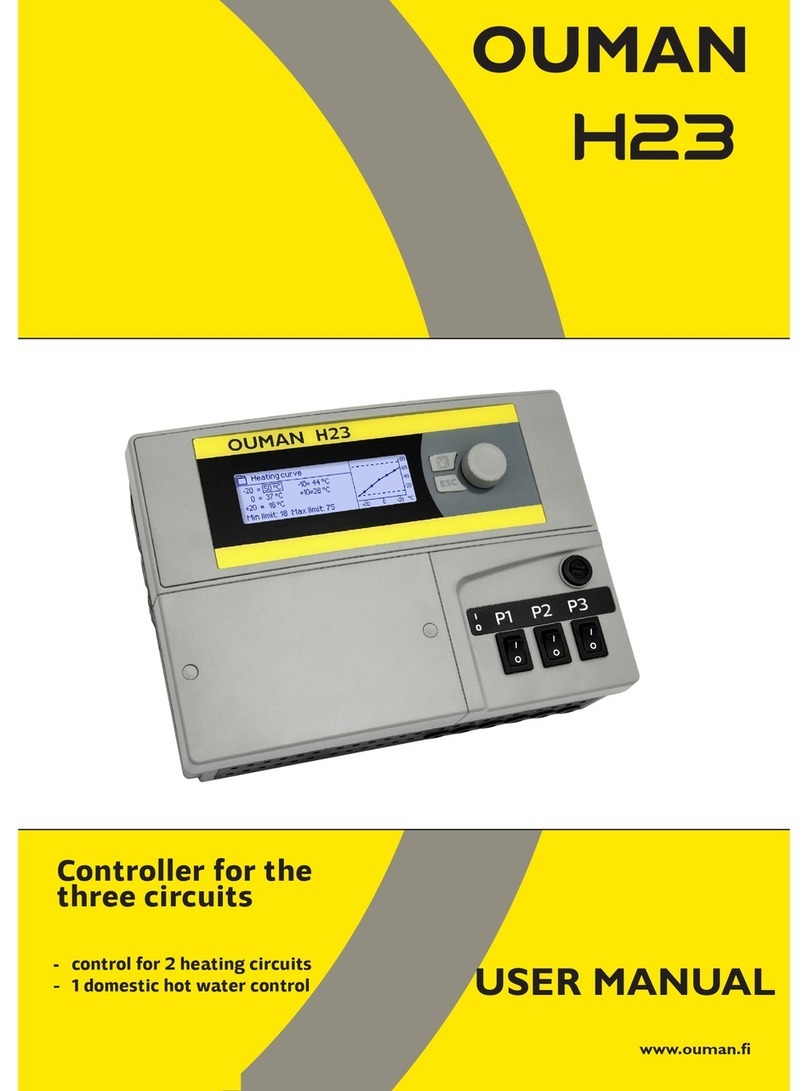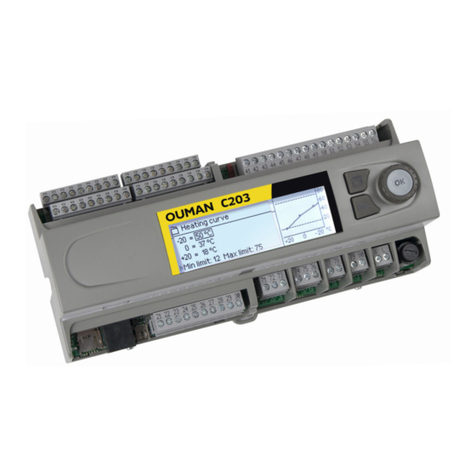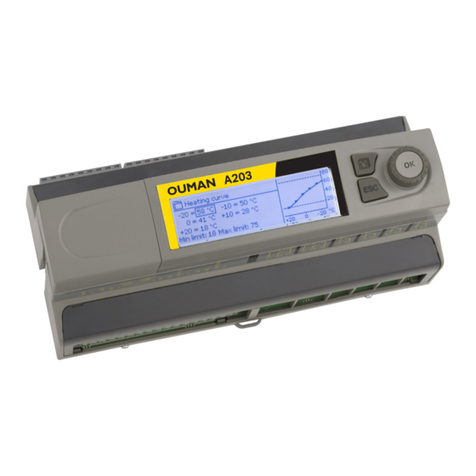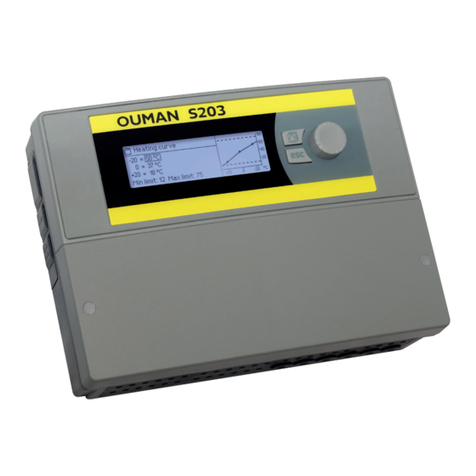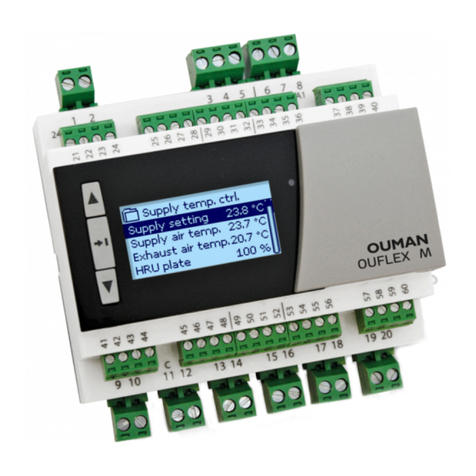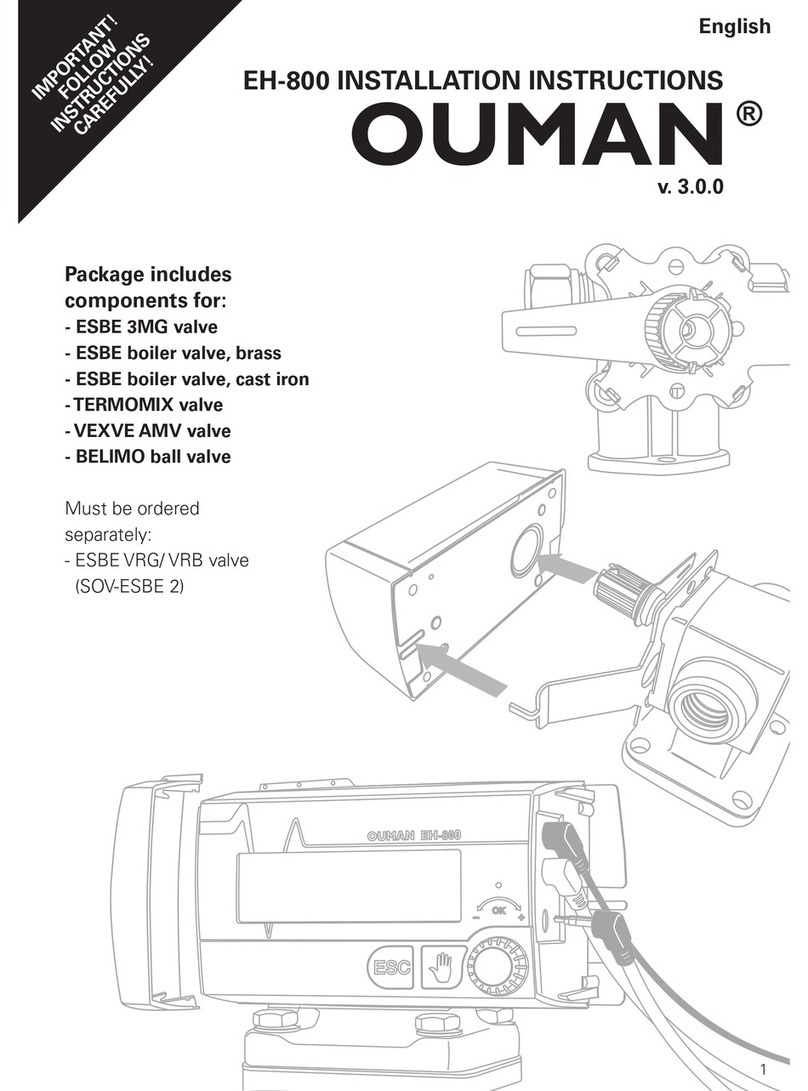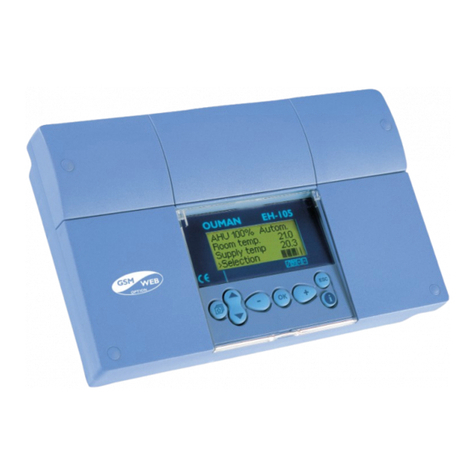
10
Send a message: H1 Info.
The controller sends a supply water info from the H1 heating circuit
to your mobile phone that shows current supply water tempera-
ture at the present and the factors eecting supply water control.
The message also includes the measurements which are aecting
the supply water control and the actuator control.
The message cannot be changed or sent back to the controller.
Key words:
H1 info:
--- H1 SUPPLY WATER-------------
According to curve 35.1 °C/
Away -control effect -6.0 °C/
Calculated supply water
setting = 29.1 °C.
--- MEASUREMENTS --------------
Supply water = 35.2 °C
Outdoor temp.= -10.7 °C
--- ACTUATOR CONTROL----------
Actuartor control = 20 %
H1 INFO
H2 INFO
Factors eecting the room temperature Explanation
----- ROOM TEMPERATURE --------------
Room temperature setting Room temperature setting set by the user.
Time program eect on room temp. Room temperature drop by weekly or exception schedule.
Away -control eect Home/Away mode for reduction of room temperature. The trigger can come from
the controller (see Inputs and outputs-> Home-Away-control), from the Home/
Away switch or be sent as a text message.
Force control eect Room temperature has been forced permanently to the desired reduction in
room temperature (see Control mode selection, p.13).
Eect of autumn drying Eect of automatic autumn drying on room temperature.
Calculated room temperature Current room temperature setting determined by the controller.
----- MEASUREMENTS -------------------
Supply water temperature Current measured supply water temperature.
Outdoor temp. The measured outdoor temperature. Outdoor temperature data is displayed if the
delayed outdoor temperature is not used in supply water control.
Delayed outdoor temperature If the heating mode is set to radiator heating, the delayed temperature meas-
urement can be used in supply water control. Typically 2 hours delay time is
used (time can be set in service menu). In supply water control the controller
uses delayed measurement as an outdoor temperature.
Anticipated outdoor temperature If the heating mode is set to oor heating, the anticipated temperature meas-
urement can be used in supply water control. Typically 2 hours anticipation
time is used (time can be set in service menu). In supply water control the con-
troller takes into account the outdoor temperature change rate.
Room temperature The measured room temperature or room temperature from the bus. The
measurement is not necessarily taken into use in all control processes.
Delayed room temperature The oating average of room temperature. The controller uses this value, when
calculating the room compensation demand (the delay time of room tempera-
ture measurement is adjustable, default 0.5 hours).
Return water temperature Presents measured return water temperature.
----- ACTUATOR CONTROL ------------
---
Actuator control Current actuator control.
Actuator control 1 (2) Current actuator 2 control. If serial-driving is in use, actuator 1 will rst open the
valve and the controller will then start up actuator 2.
Actuators control 50 % means that the valve 1 is totally open and the valve 2 is totally closed. 100%
means that both valves are open.
----- PUMPS-------------------
P2.1 (3.1) Pump The state of the pump.
P2.2 (3.2) Pump The state of the reserve pump/alternative pump.
P2.1 (3.1) Pump control Control of the pump.
P2.2 (3.2) Pump control Control of the reserve pump/alternative pump.
P2.1 (3.1) Run time Running time for pump from the counter.
P2.2 (3.2) Run time Running time for reserve/ alternative pump from the counter.
Pump in progress Indicates which of the pumps is running in P2.1 or P2.2 (H1)/ P3.1 or P3.2 (H2 circuit).






